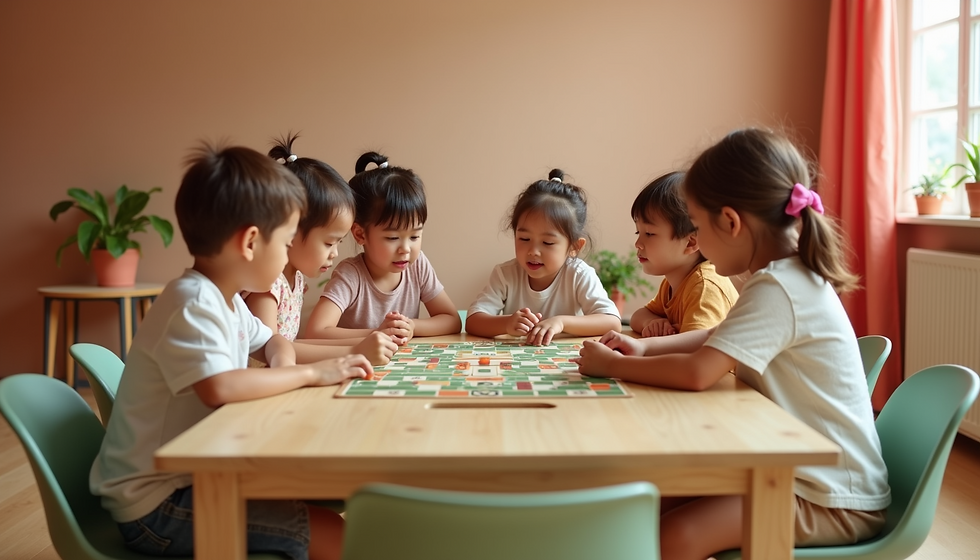Social Awareness Games
- marshakleine
- Jul 11
- 2 min read

Social awareness games for kids can be a fun and engaging way to help them develop crucial social skills like empathy, cooperation, and understanding of emotions. These games can be tailored for various age groups and can be played both indoors and outdoors.
Emotion Charades:<Opens in new tab>
Kids act out different emotions (happy, sad, angry, scared, etc.) for others to guess, helping them recognize and understand emotions in themselves and others.
"Feeling Faces" Mirror Game:<Opens in new tab> Children make faces in a mirror to match different emotions, enhancing their ability to identify and express feelings.
Children can act out different social scenarios, like ordering food at a restaurant or asking for help, to practice social skills in a safe environment.
Building a Fort:
Working together to build a fort, whether with blankets and pillows or with building blocks, encourages collaboration and problem-solving.
Group Art Projects:
Creating a mural or a collaborative sculpture allows children to work together, share ideas, and negotiate to create a shared outcome.
These games, like the one from Sensory Education, can focus on specific social skills, such as using manners or managing emotions.
These questions can spark conversations and help children explore different perspectives and social situations.
Board Games:Games like "The Game of Life" or "Monopoly" can be used to teach decision-making, understanding others' perspectives, and empathy.
Show and Tell with a Twist:
Instead of just showing an object, children can explain why it's important to them or how it relates to a specific feeling or experience.
Conversation Jenga:
Write conversation starters or social skills prompts on Jenga blocks. Players take turns pulling out a block and engaging in a conversation or discussing the prompt.


Comments